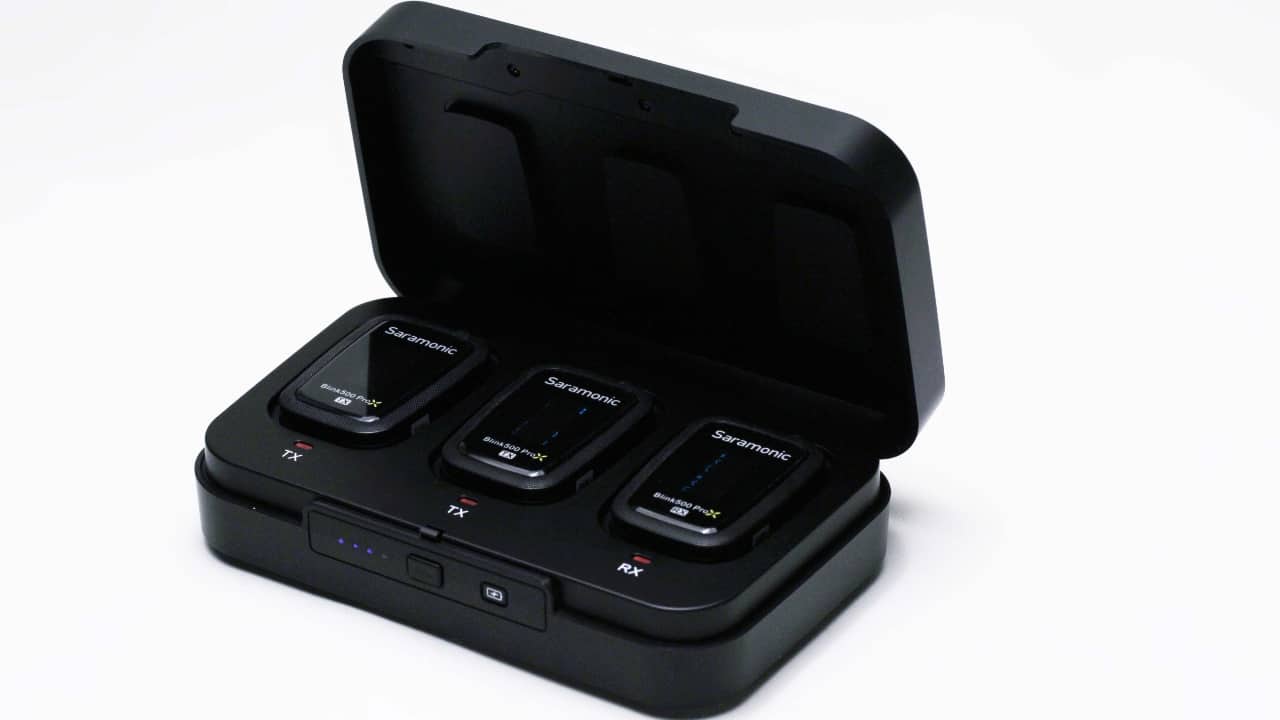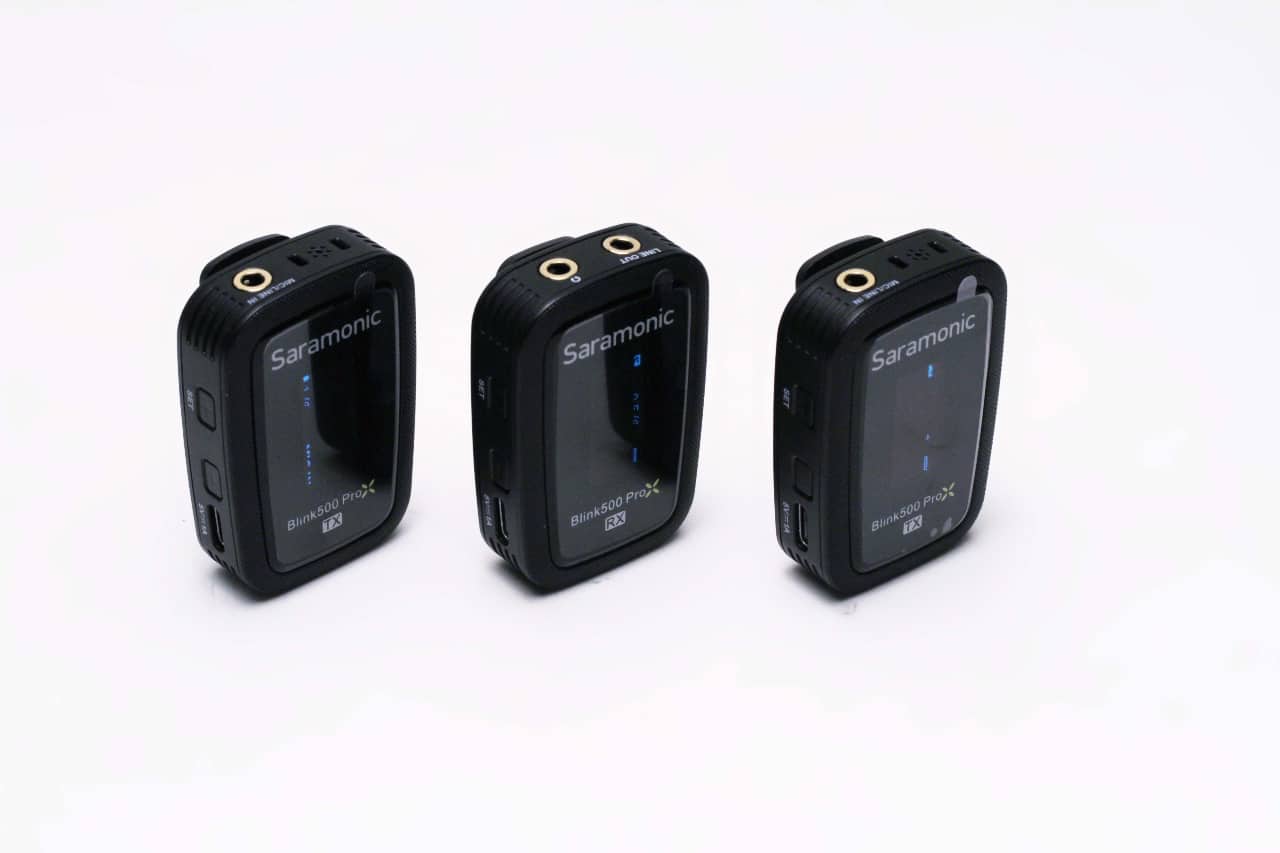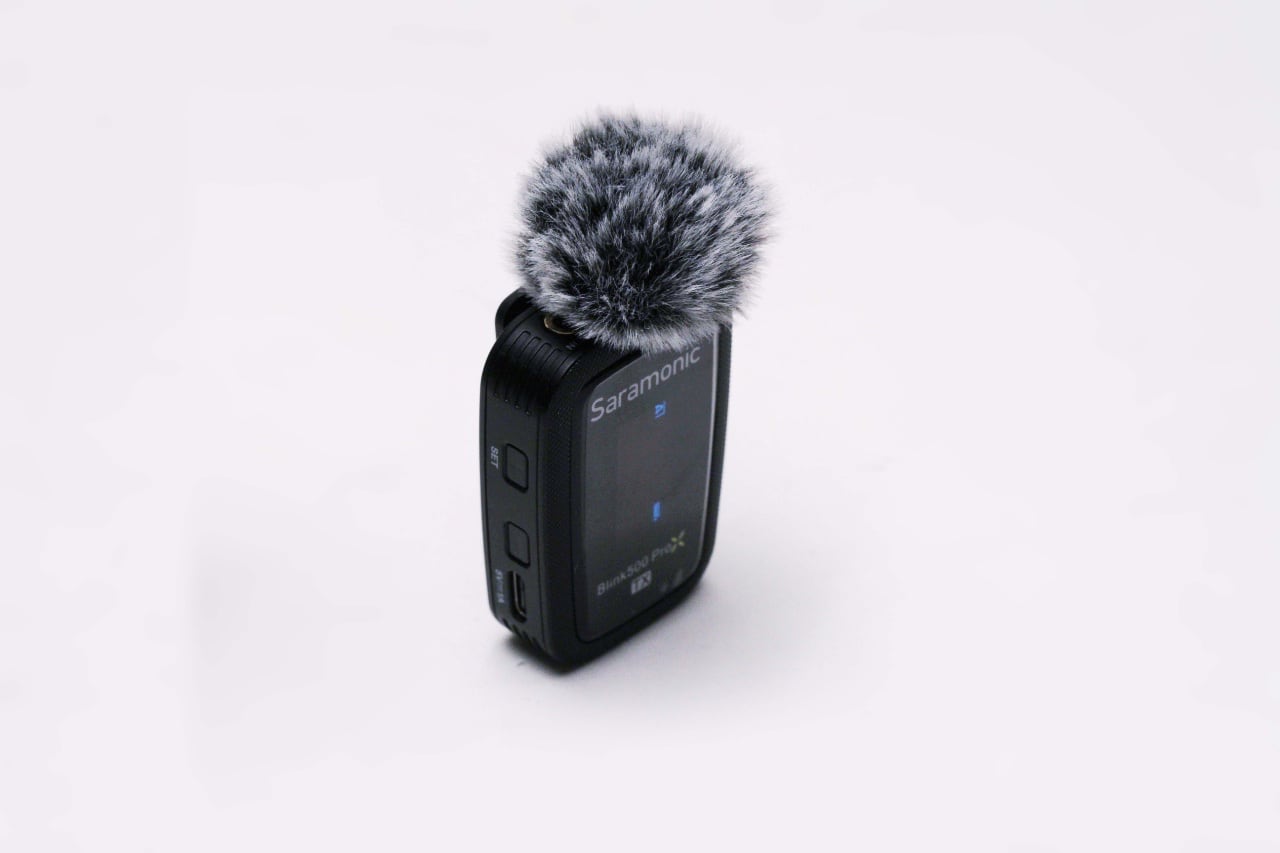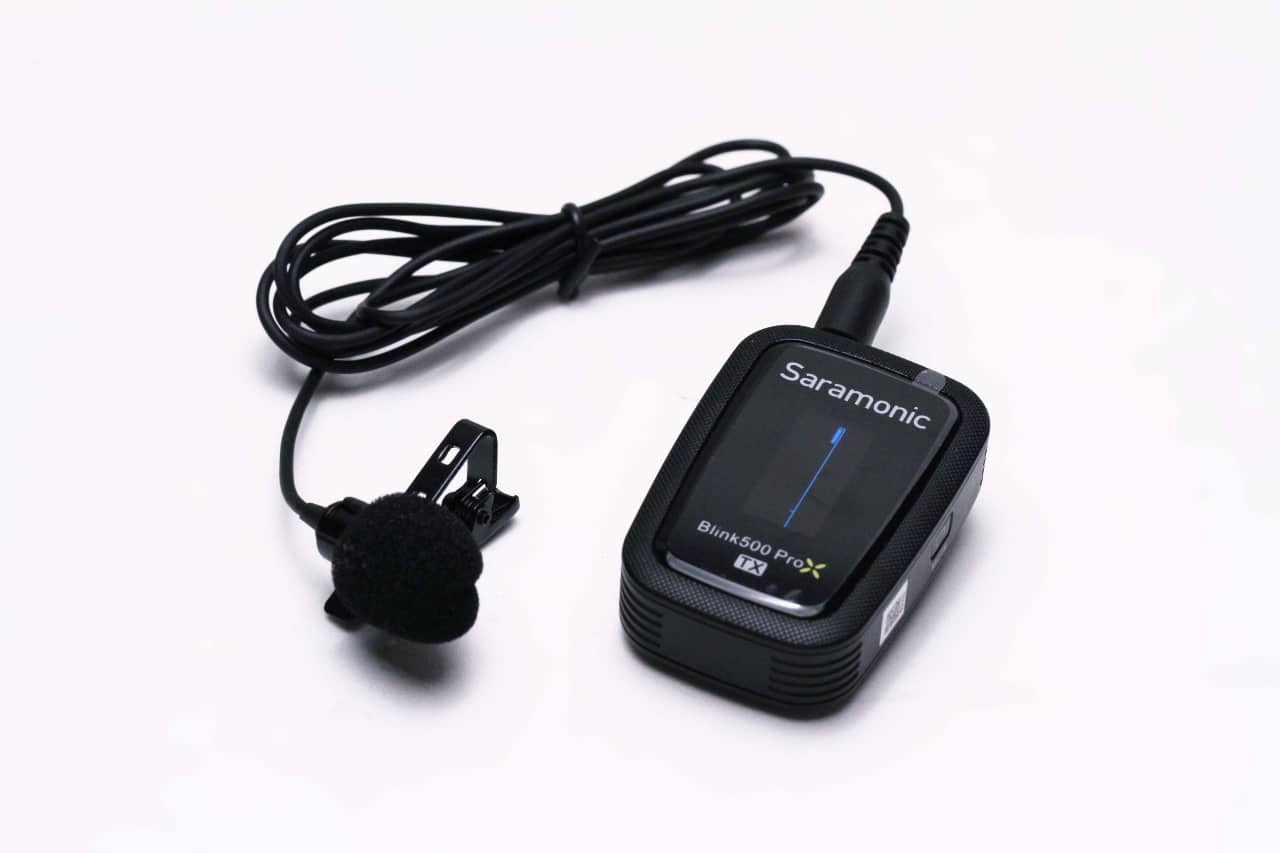
Saramonic’s latest and very capable radio mic set is well-pitched at the YouTubing high-end.
It’s always hard to tell who was first to do something, but Saramonic was probably among the earliest manufacturers to offer high-portability radio mic sets in a market the company calls advanced creators. It’s a realm in which demands on gear have grown sharply as the best YouTubers have approached the production standards of broadcast TV, while the limited tolerance of those people for toting a Volvo-load of technology can make those standards difficult to match.
Saramonic offers a series of radio mic kits which transmit audio in the 2.4GHz part of the ISM band, a region of radio spectrum which is (more or less) license free worldwide. Each of those kits is presented in a nicely-integrated charging cases, and representing the range here we see the package formally titled Blink 500 ProX B2. It includes two transmitters and one stereo receiver alongside two mics, windjammers for the built-in mics, plus audio and USB cables. No USB power supply is included, though it only seems to require conventional 5V power and should be compatible with whatever you have.
A tidy ecosystem
These devices are part of a tidy little ecosystem including the receiver we see here, which is intended to work with devices expecting analogue audio input, or a compatible receiver with USB-C connectivity which is designed to sit on the bottom of a phone. The B1 and B2 sets have one or two transmitters respectively, with the analogue-output receiver, while the B3 and B4 sets have one or two transmitters and a plug-in, phone-compatible receiver. The USB-C on the receiver we’re reviewing here is designed to receive charge, not to send audio. To record the B1/B2 receiver’s output on a phone or tablet you’ll need an appropriate USB-C or Lightning audio cable, or just get the USB receiver in the B3 or B4 sets.
The B2 set we see here has a flip-top charging case with places for the two transmitters and receiver. They charge automatically when inserted, using some gold-plated pogo pins, though there are individual USB-C connectors on each too. The case itself accepts USB-C power and includes some battery capacity of its own. The company predicts ten hours of life for the transmitters and receiver, plus the ability to recharge more than twice in the case, which is a lot of endurance for not much luggage. That approach tells us what this stuff is built for: people going places in the service of a YouTube channel to whom “magliner” sounds like a cruise ship.

Two transmitters and (centre) a receiver. Nothing more than this is required for the system to work; the clip doubles as a cold shoe mount
Transmitters and receiver are almost indistinguishable beyond the printed text, so conscientious users will make sure the receiver goes in the rightmost slot in the case, which is labelled for it, avoiding confusion during a quick deployment. The transmitters have built-in mics and, yes, they’re detectably less good than the included lavaliers, but they demand nothing more than hooking a receiver onto a collar and switching on. It’s always hard to review mics, since it’s such a subjective thing, though the included ones have a nice round sound with plenty of bass, the sort of thing that makes people sound agreeably like a TV presenter. The company specifies compatibility with most lavalier mics which expect power and signal on a 3.5mm jack, so there are other options.
Despite the inbuilt batteries, everything’s very lightweight and unlikely to pull on someone’s lapel. Startup time is a few seconds and there seems to be no inclination to spontaneously abandon the pairing between transmitters and receivers. The menu (which appears on those little aqua OLEDs that everyone uses these days) is tough to see in bright light and fractionally fiddly at first encounter - perhaps an extra button might have made it slightly easier to use. Still, it’s workable and shouldn’t be something most people need to toy with often once it’s set up.
Performance
Analysing radio range performance is a minefield exactly because the 2.4GHz spectrum is unlicensed worldwide, everyone uses it for everything, and it does get busy. All we can say is that when it was tested things worked well. At ten milliwatts of output, it happily crosses the few dozen feet that cover most use cases, and ran out of range at perhaps a hundred feet in a built-up area.

The inevitable cute windjammer. It's reasonably effective, though a little fiddly to instal
Audio performance is fine, with reasonable frequency response and no perceptible distortion. The documentation describes a line level input mode for the transmitters. That mode disables the mic power, exactly as we’d expect, though the sensitivity remains quite high. Some line level inputs might need external attenuation to work well. There’s a related level confusion on the receiver, which marks one output for headphones and the other with “line out,” though the signal present there always seems to be at microphone level. Microphone level output absolutely makes sense, considering many mirrorless cameras and devices like phones will expect microphone level signals, though some people might be thrown by the fact that it’s marked “line”.
A packed market

The included lavaliers are pretty good, especially for the money, and they do sound considerably better than the inbuilt mic (though it's quite usable)
The Blink 500 series dives into a packed market, with names as big as RØDE competing for attention. Prices vary from about £250 upward in the UK; B&H wants about the same number of dollars, plus tax, but look around for deals. Different kits vary. The charging case feels well made and includes extra capacity, and the devices themselves are tiny and lightweight. The slightly odd choice of line level input sensitivity only matters if you don’t want to use the radio mic as, well a mic, and the fact that the mic output is marked “line out” is really just a quirk of the markings. It’s those good mics which are most memorable, though.
The company also offers the Blink Me device which has the interesting option of a configurable LCD display that more or less fills the circular front panel of the puck-like transmitter, allowing users to brand a collar-clip mic much like someone would brand a traditional microphone with a slip-on flag. We’ll try to look at one of those in due course, because that’s a cute idea.
Tags: Audio


Comments